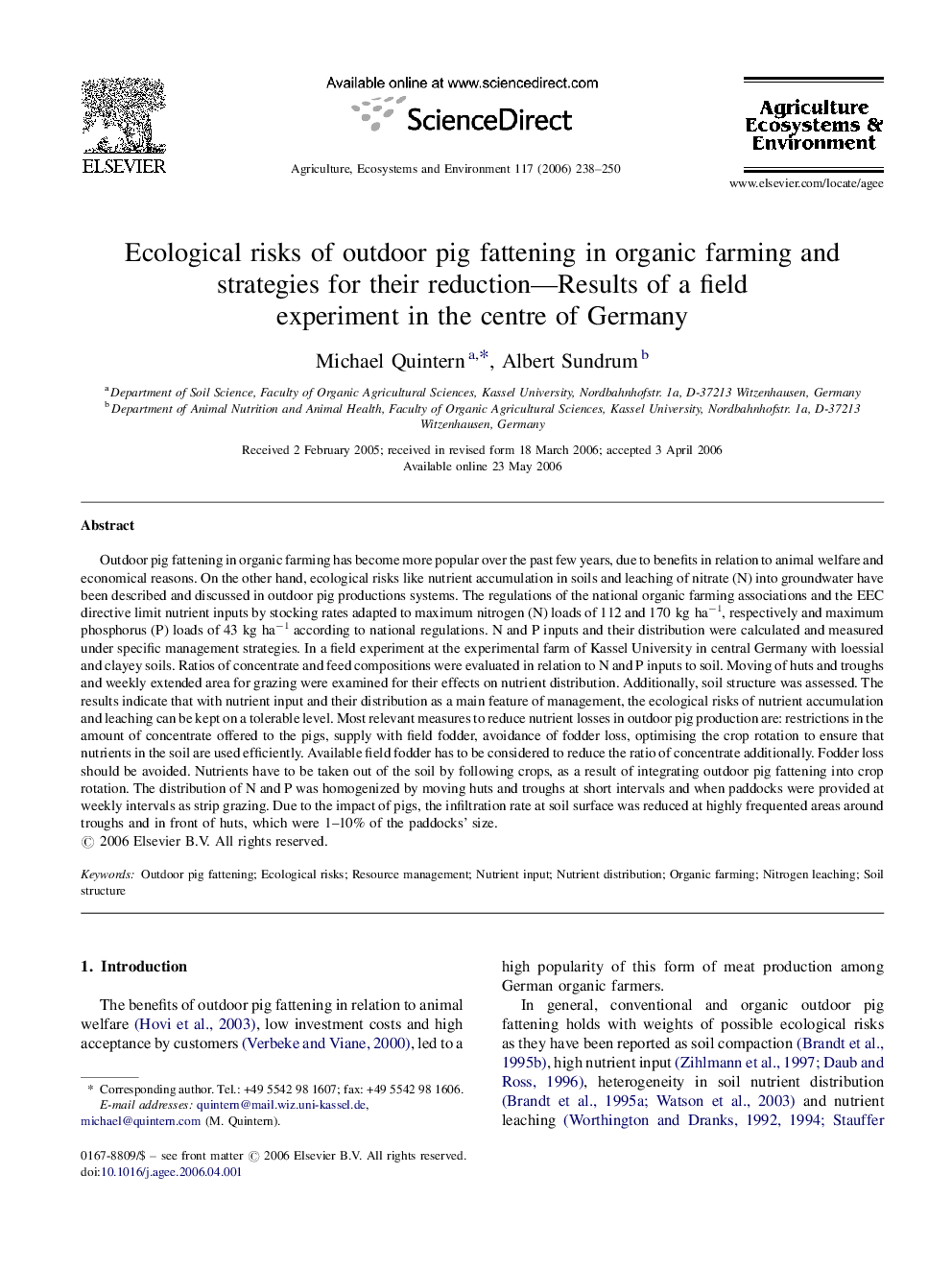| کد مقاله | کد نشریه | سال انتشار | مقاله انگلیسی | نسخه تمام متن |
|---|---|---|---|---|
| 2415837 | 1103980 | 2006 | 13 صفحه PDF | دانلود رایگان |

Outdoor pig fattening in organic farming has become more popular over the past few years, due to benefits in relation to animal welfare and economical reasons. On the other hand, ecological risks like nutrient accumulation in soils and leaching of nitrate (N) into groundwater have been described and discussed in outdoor pig productions systems. The regulations of the national organic farming associations and the EEC directive limit nutrient inputs by stocking rates adapted to maximum nitrogen (N) loads of 112 and 170 kg ha−1, respectively and maximum phosphorus (P) loads of 43 kg ha−1 according to national regulations. N and P inputs and their distribution were calculated and measured under specific management strategies. In a field experiment at the experimental farm of Kassel University in central Germany with loessial and clayey soils. Ratios of concentrate and feed compositions were evaluated in relation to N and P inputs to soil. Moving of huts and troughs and weekly extended area for grazing were examined for their effects on nutrient distribution. Additionally, soil structure was assessed. The results indicate that with nutrient input and their distribution as a main feature of management, the ecological risks of nutrient accumulation and leaching can be kept on a tolerable level. Most relevant measures to reduce nutrient losses in outdoor pig production are: restrictions in the amount of concentrate offered to the pigs, supply with field fodder, avoidance of fodder loss, optimising the crop rotation to ensure that nutrients in the soil are used efficiently. Available field fodder has to be considered to reduce the ratio of concentrate additionally. Fodder loss should be avoided. Nutrients have to be taken out of the soil by following crops, as a result of integrating outdoor pig fattening into crop rotation. The distribution of N and P was homogenized by moving huts and troughs at short intervals and when paddocks were provided at weekly intervals as strip grazing. Due to the impact of pigs, the infiltration rate at soil surface was reduced at highly frequented areas around troughs and in front of huts, which were 1–10% of the paddocks’ size.
Journal: Agriculture, Ecosystems & Environment - Volume 117, Issue 4, December 2006, Pages 238–250